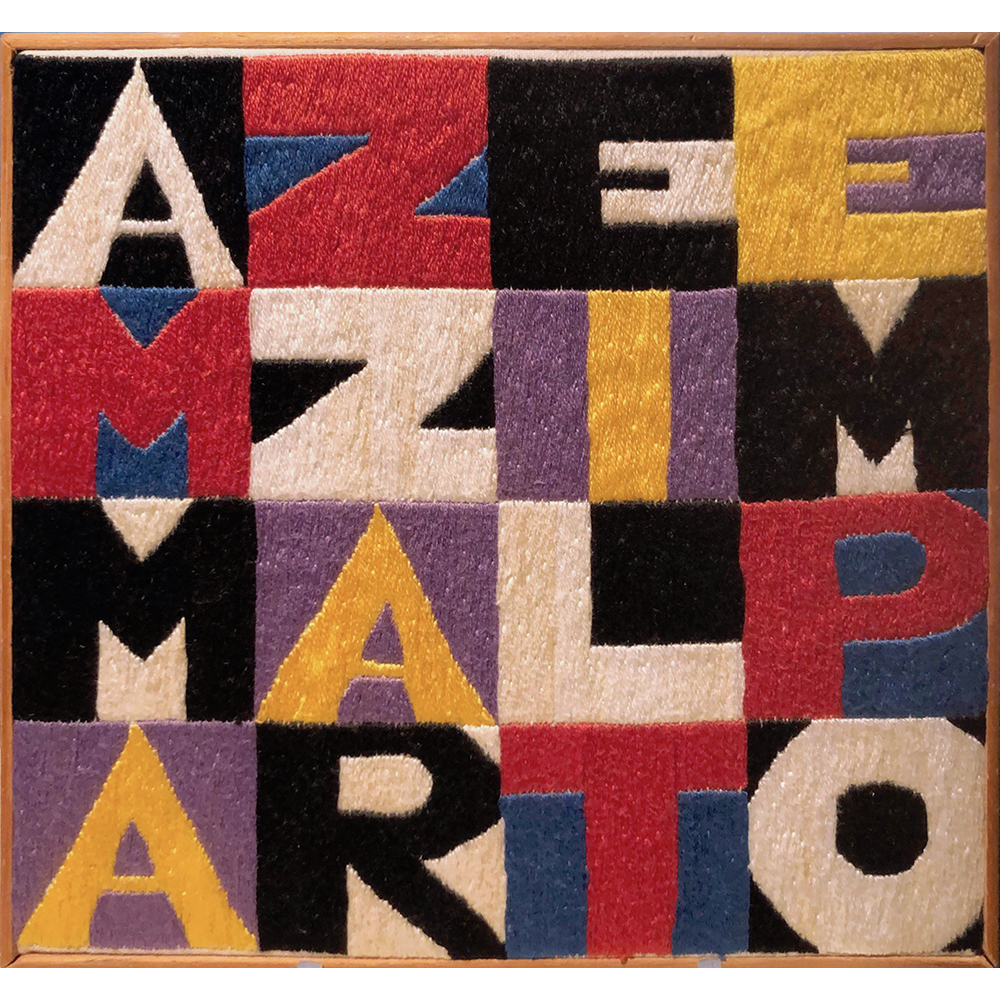Artwork Description
Alighiero Boetti – Ammazzare il tempo
Dimensions: 7.13 x 7.38″ framed / 6.75 x 7″ unframed
Year: 1984
Medium: embroidery on canvas over panel
Alighiero Boetti’s Ammazzare il tempo (To Kill Time) is a unique work made up of the phrase ‘Ammazzare il Tempo’ broken down into its sixteen constituent letters. The work is part of his Arazzi series of works, in which time, word play, and random generation were paramount. These letters are arranged in a different pattern than we typically read, in this case, in vertical columns from left to right. This rearrangement of language is Boetti’s way of emphasizing the artificial construct of language. Instead of being readily available to read, the viewer is first drawn to each letter as a work of art in its contrasting colors, as if each letter had its own meaning. In this way Ammazzare il tempo becomes a work that both visually and literally presents the concept of ‘killing time’ as a joyous, colourful and painstakingly crafted enterprise. “It is a tautology – a beautifully organised (and disorganised) statement that represents nothing but its own self in a different visual format.” As such it is a work that, like so many of Boetti’s creations, is one that asserts the artist’s belief that ‘the greatest joy on earth consists in inventing the world the way it is without inventing anything in the process.’ (Alighiero Boetti quoted in Alighiero Boetti exh. cat., Frankfurt Am Main, 1998 p. 297.)
Another important aspect of Ammazzare il tempo is its visual fusion between Eastern and Western thought and ideology. Through this fusion, Boetti exposes a deeper sense of the innate union and the division that exists in the world. Boetti believed in the universal principle of ordine e disordine (the Heraclitan idea that the world consists of the equally important opposites of ‘order’ and ‘disorder’). Boetti’s Ammazzare il tempo is a colourful composite of organised disorder. Comprising of individual coloured letters – each highlighted or obscured against a contrasting square coloured background that was determined by the Afghan women who embroidered these works according to Boetti’s guidelines – all the arazzi are essentially written texts. Boetti’s splitting of the text into its own constituent parts – its individual letters – was also intended to expose the fact that language too is but another sophisticated but nonetheless also artificial systematic arrangement of form.
Time was the other key feature of the arazzi and their making. Because of the way in which they were made, the process of the making of these works was, by necessity a long one: sometimes taking over a year to complete. Not only was the process of embroidering these works a time-consuming one, but the sending and receiving back of these works (across an imaginary borderline between East and West) was also a prolonged process. The arazzi were therefore the products of extended periods of time spent, making (on the part of the artist’s Afghan collaborators) and waiting (on Boetti’s part). Both sides of this process can, as Boetti was well aware, be considered to be, in different ways, effective means of ‘killing time.’

